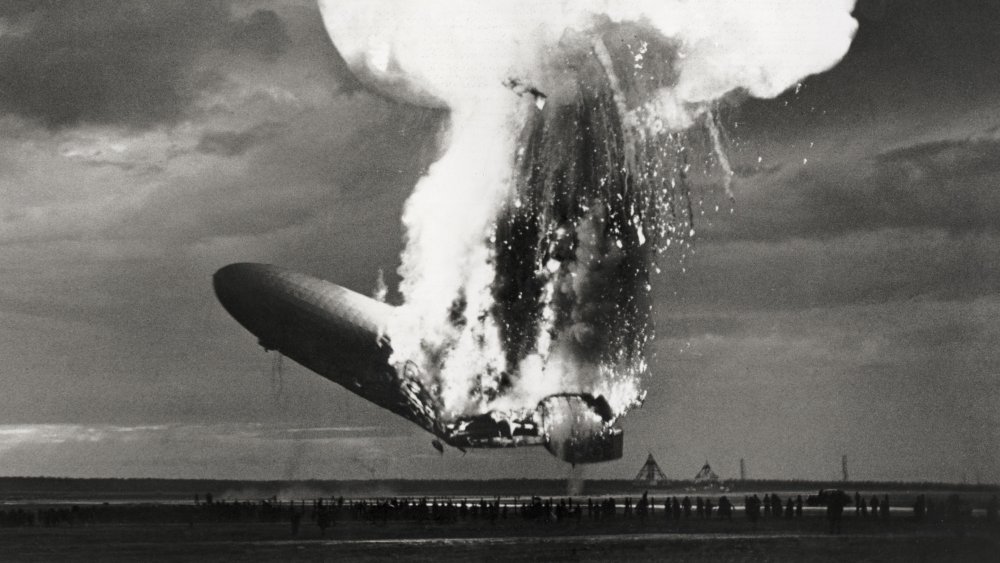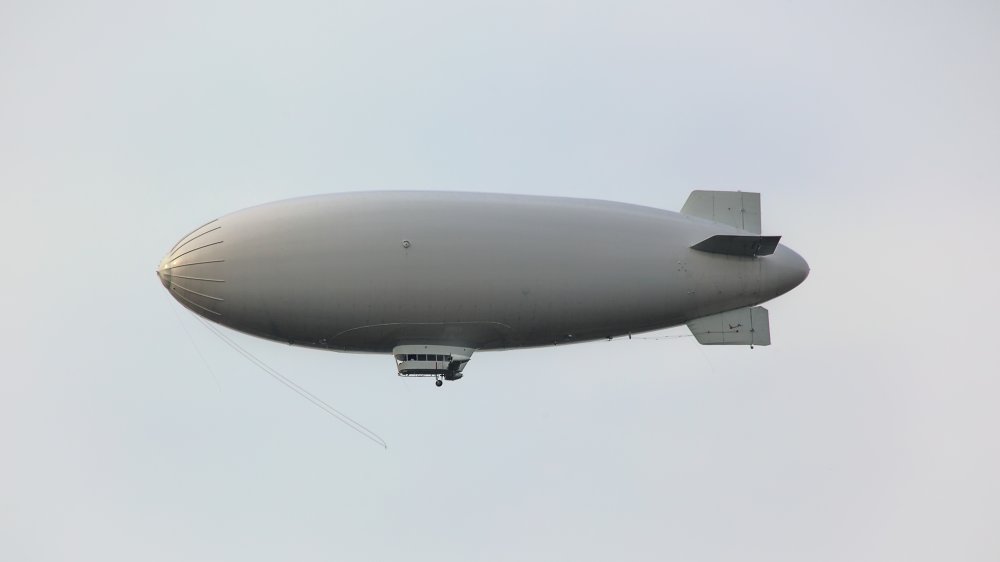The Rise And Fall Of The Hindenburg
When someone says the word "zeppelin" today, the first association is likely "Led"...the era of zeppelins coming into their own as a luxurious and coveted form of air travel came to an end on May 6, 1937 when the Hindenburg burst into flames during its landing in Lakehurst, New Jersey. Per Smithsonian Magazine, the zeppelin left Frankfurt, Germany just three days before the disaster on what was supposed to be the first of 10 cross-Atlantic trips. However, it was actually the 35th ocean crossing for the Hindenburg; its usual route was from Germany to Brazil.
At this point in history, it was almost impossible for planes to get across the entire Atlantic Ocean. As noted by BBC Culture, "These long, sleek, silver machines could be beautiful, their design a masterpiece of lightweight construction. They appeared to cruise through the air effortlessly." The inside of the airship boasted "enticing public rooms, snug private cabins, ship-shape crew's quarters and airy promenades on two decks inside the taut belly of its svelte, streamlined hull." Passengers enjoyed a restaurant, bar, lounge, and, in a surprising sign of the times, a smoking room, sealed for "safety."
Oh, the humanity
What went wrong? According to BBC Culture, "helium was, and remains, the ideal gas for airships, whether rigid with internal skeletons like the Graf Zeppelin or deflatable like the 'blimps' used for anti-aircraft defense in World War II and for aerial advertising today." But in the 1930s, Germany had no choice but to inflate their zeppelins, including the Hindenburg with hydrogen due to "the US government's steadfast refusal to supply foreign countries, including Germany, with non-flammable helium gas." Per History, at this time the United States "had a monopoly on the world supply of helium and feared that other countries might use the gas for military purposes, banned its export." As a result, the highly flammable hydrogen caught fire and the resulting disaster killed 36 of the 97 people on board; because the zeppelin was so close to the ground, "many survivors jumped out of the zeppelin's windows and ran away as fast as they could."
The Hindenburg disaster is also particularly notorious because of radio reporter Herbert Morrison's on the scene heart-rending eyewitness account, including his famous, oft-quoted line "Oh, the humanity!" Morrison's account was broadcast at WLS in Chicago the night of May 6th, replayed nationwide the next day, and remains well-known to this day, although the footage that usually accompanies his words didn't come from him; History reports that "his audio report was synced up with separate newsreel videos in subsequent coverage of the Hindenburg disaster."

